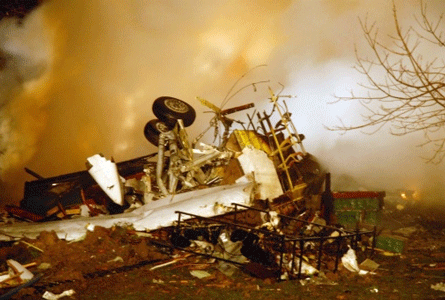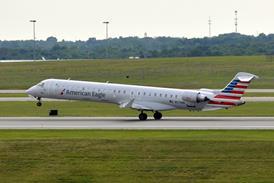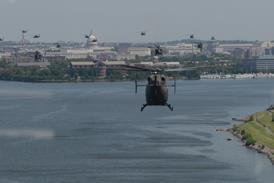 New Air Sahara president Alok Sharma has never been so busy in his life. Since the five-year veteran of the Indian airline was named to the top executive post in June, he has unveiled aggressive expansion plans that are to include the addition of 14 new domestic and international routes by the end of the year and dozens more aircraft.
New Air Sahara president Alok Sharma has never been so busy in his life. Since the five-year veteran of the Indian airline was named to the top executive post in June, he has unveiled aggressive expansion plans that are to include the addition of 14 new domestic and international routes by the end of the year and dozens more aircraft.
The expansion is intended to help the 13-year-old full-service carrier win back market share lost to competitive new airlines in the first half, which was a testing time for Air Sahara as it was subject to a takeover by Jet Airways. The bold expansion moves are also intended as a message to the many cynics who consider the airline on the way out of the market.
“We are not going anywhere,” Sharma said in an interview last week while on a visit to Singapore.
“We have a huge advantage over the new airlines because we have the necessary infrastructure base, like the slots and airport space, and that infrastructure base is what a lot of people forget.”
He adds: “There is a huge premium attached to the infrastructure that we hold so we have a big advantage.”
Market leader Jet Airways announced plans to acquire all of Air Sahara from the Sahara Group in January for around $500 million but the deal fell apart five months later when Jet walked away from it, saying government approvals had not been secured ahead of a 20 June deadline. Analysts had for months been saying Jet had agreed to pay too much, however.
Air Sahara was effectively being run by Jet until the deal’s collapse, after which the larger airline’s executives left in a hurry. Sahara Group and Jet are now in the courts fighting over many millions of dollars stuck in an escrow account.
Sharma says he is not interested in looking back and is only focused on Air Sahara’s growth, however. And when asked whether Sahara Group is now trying to find another buyer, he says only: “As far as my brief is concerned it is just to grow the airline.”
In addition to expanding to cater to fast-growing demand in the Indian market, Sharma says the airline quickly needs to win back lost market share. He says Air Sahara’s domestic market share was around 12-13% when the Jet deal was announced but it is now only around 8-9%.
“Our first goal is to get back our market share which we lost,” he says. “My plan is that by December 2006 our market share should be as good as what it was in December 2005.”
Air Sahara launched domestic operations late in 1993 and now has an extensive domestic network as well as limited international operations, to Colombo in Sri Lanka, Kathmandu in Nepal and Singapore.
In recent weeks Sharma has had a lot less sleep than normal, having unveiled plans to add 11 new domestic destinations as well as three new international destinations by the end of the year. The new international destinations it plans to serve are Dhaka in Bangladesh, Guangzhou in China and Male in the Maldives.
In total 66 new weekly flights will be added over the next four months, says Sharma, who adds that the airline has the capacity to do so as the carrier’s aircraft are underutilised, at 8.5 hours per day. He expects this to increase to more than 11 hours per day in the coming months.
Air Sahara is also preparing to put into service an additional Boeing 737-800 that has just arrived on lease from Bavaria International Aircraft Leasing as well as another from the same lessor this month. In February and March two more 737-800s are due to arrive, on lease from GE Commercial Aviation Services.
In addition, the carrier is seeking to lease 30 more 737s over the next 2-3 years and Sharma says talks are already taking place with major leasing companies. Its fleet currently comprises 27 aircraft, most of which are 737s and all of which are leased.
Sharma says the 30 additional aircraft it is seeking to lease will be in addition to 10 new 737-800s for which it confirmed an order with Boeing late in August. The order was the first for new aircraft in the carrier’s history and deliveries are due to begin in 2009.
“Between now and 2009 we need 30 more planes to get to the size we aspire to,” says Sharma, who adds that the carrier is seeking to expand its domestic operations by 25-30% annually over the next few years and international operations by more than 60%, in terms of available seat kilometres.
Sharma says the growth will not come at any cost, however, and there are significant efficiency gains that can still be squeezed out of the airline. He says while it lost employees during the uncertain time during which Jet was working to take it over, Air Sahara has since learned that it can live with less, and the staff base of around 4,000 is adequate for now.
While plotting expansion on its own, Air Sahara is hoping to secure new codeshare deals with foreign carriers to allow for further growth. Sharma also sees oneworld membership in its future.
He says the carrier is first looking for a codeshare partner in China, which it plans to start serving with flights to Guangzhou in October from its Delhi base.
Sharma also sees an existing codeshare deal with oneworld alliance member American Airlines being expanded in future to cover domestic flights in India. The two started codesharing late last year on new American-operated flights between Chicago and Delhi as well as on a limited number of American-operated US domestic flights.
Air Sahara sees the American tie-up as a first step towards eventually joining the oneworld alliance, says Sharma, although no timeframe has been set for when this may occur.
“Oneworld has said they would like to have a partner in India and we have moved in that direction already with the American Airlines partnership,” he says.
Sharma also sees codeshare partnerships being established in other parts of the world as Air Sahara expands its limited international operations. He sees more Chinese destinations being added to the international network in future, in addition to more services to Southeast Asia as well as the Middle East.
India’s government has said it will allow Air Sahara and rival Jet Airways – the only two privately owned carriers with international rights – to start serving the Middle East after 2008 and Sharma says there are plenty of opportunities in that market.
“We see a lot of international growth in our future,” says Sharma. “Basically anything six hours from Delhi is what we will look at.” He adds: “Believe me, there is a lot more to come from us.”
Source: Airline Business























